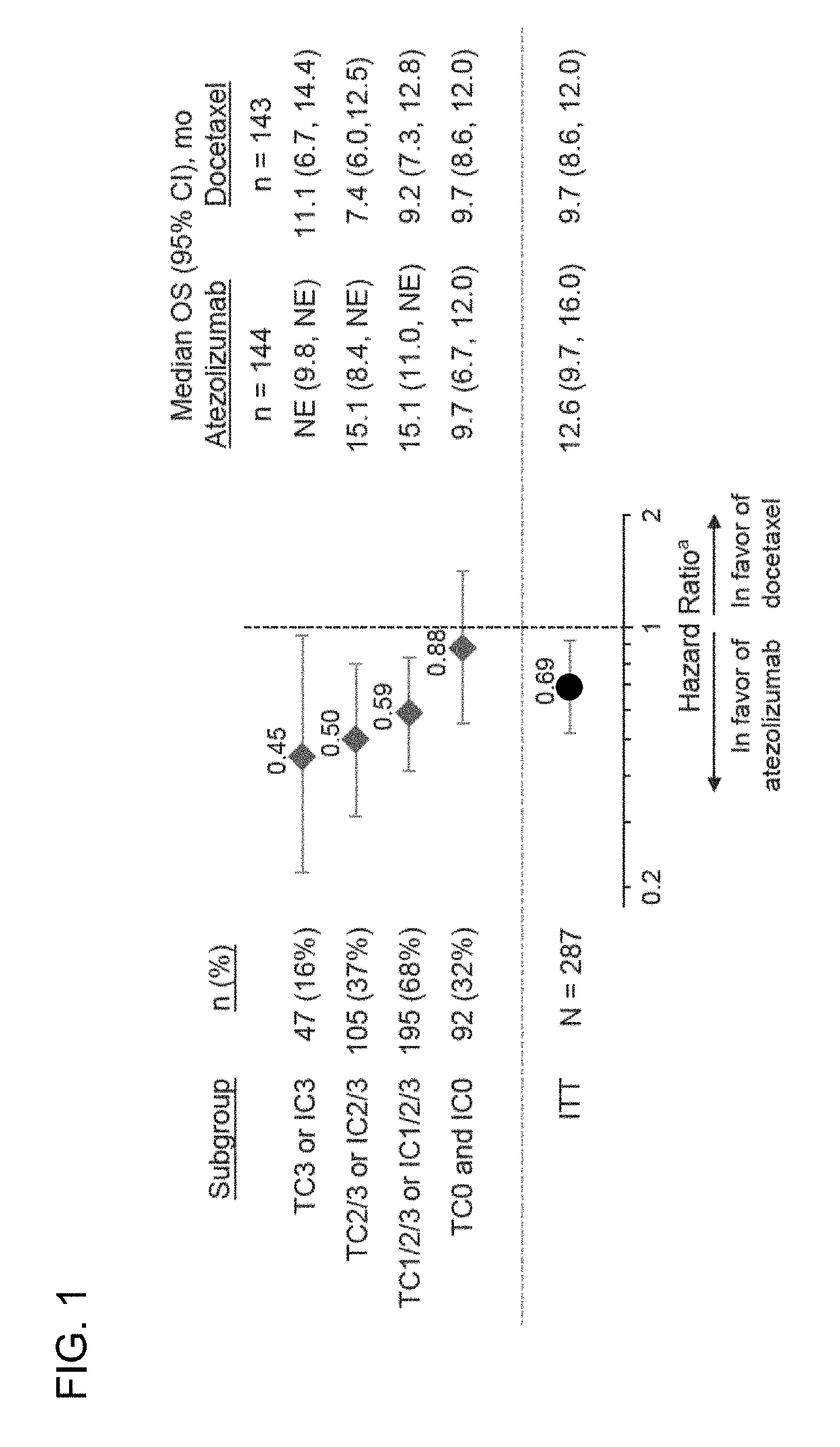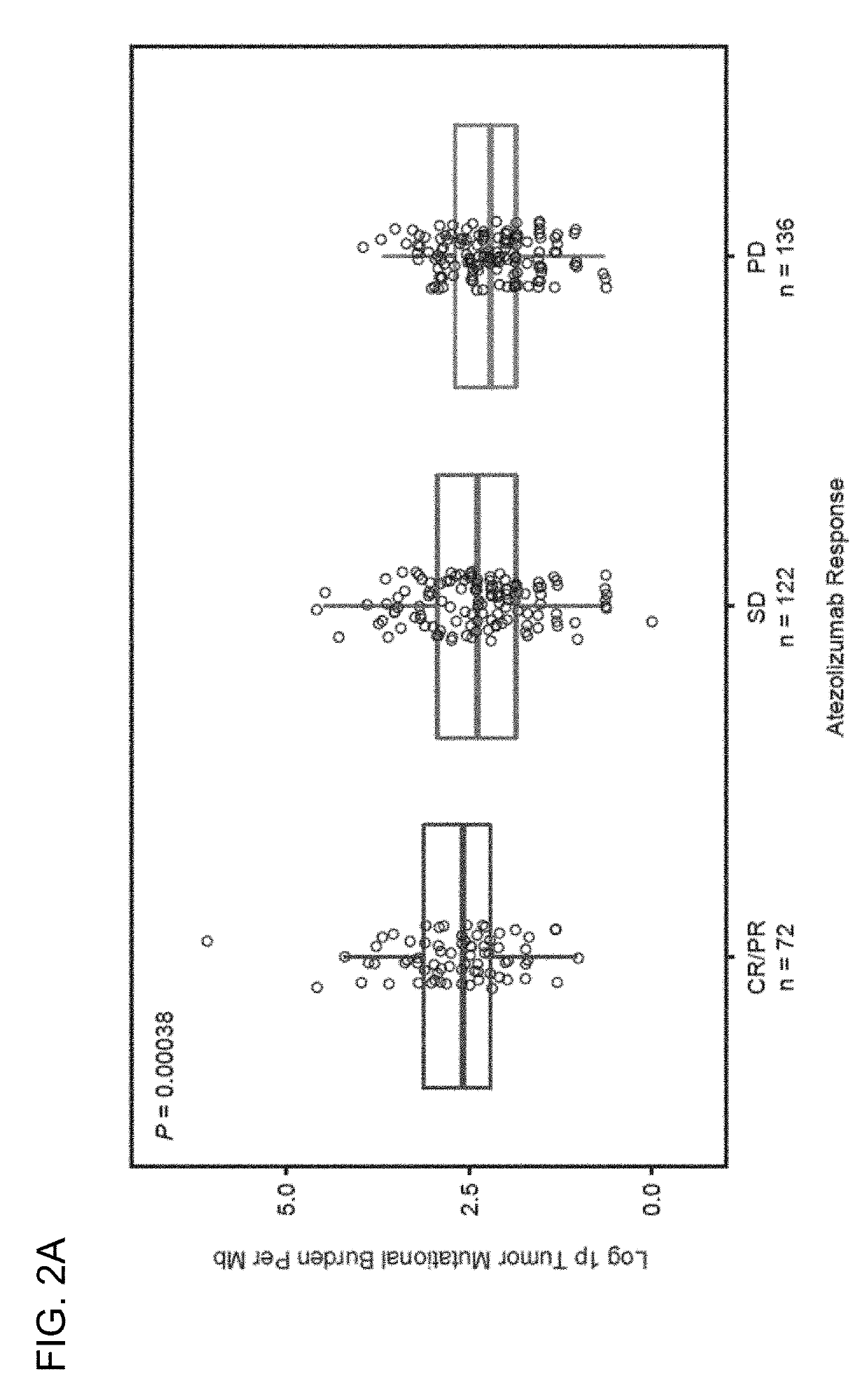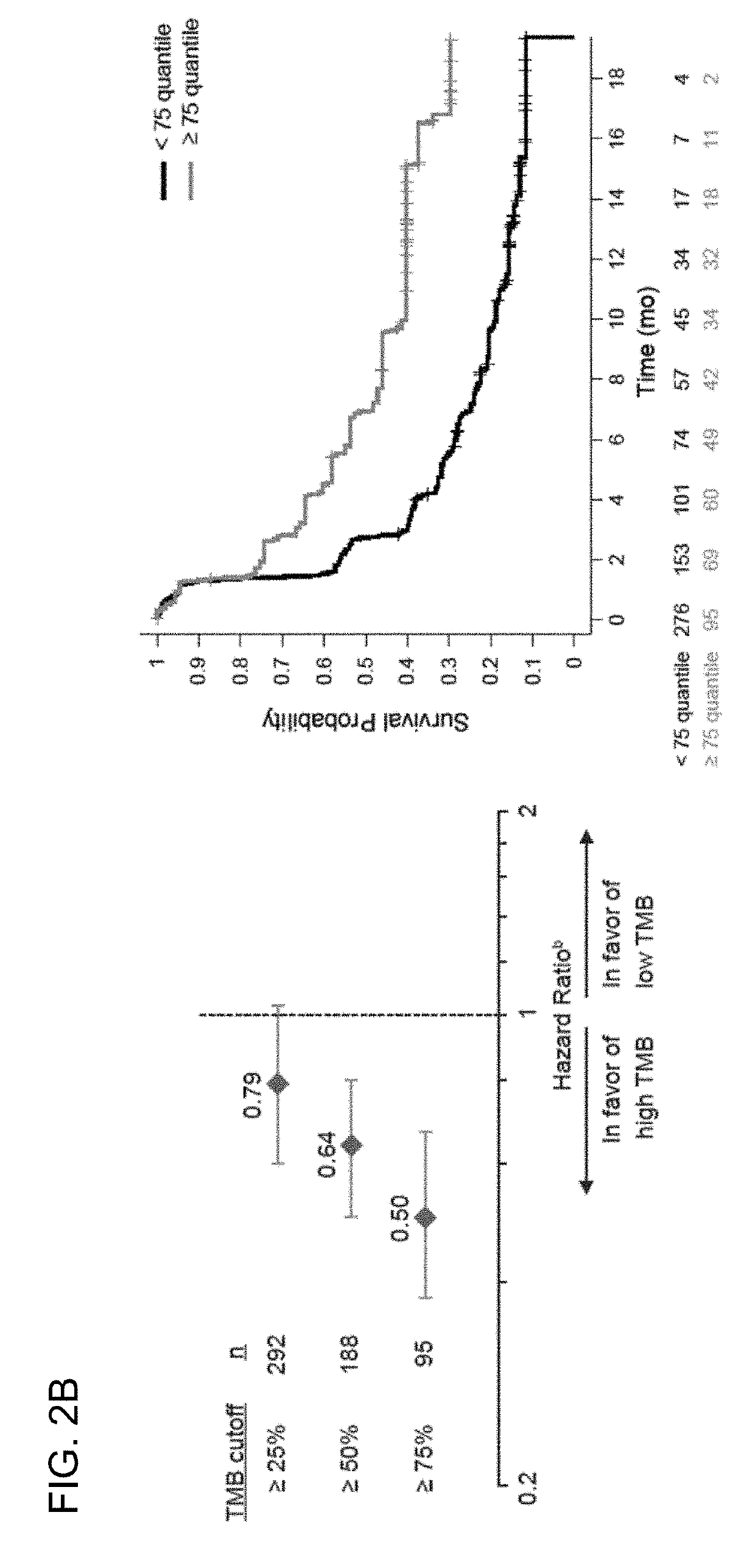Therapeutic and diagnostic methods for cancer
a cancer and diagnostic method technology, applied in the direction of immunoglobulins, drug compositions, peptides against animals/humans, etc., can solve the problems of difficult timely detection and treatment, exceedingly poor results, and cancer remains one of the most deadly threats to human health
- Summary
- Abstract
- Description
- Claims
- Application Information
AI Technical Summary
Benefits of technology
Problems solved by technology
Method used
Image
Examples
example 1
[0462]The correlation between the level of somatic mutations detected in a tumor tissue sample (e.g., mutation load, also referred to as tissue tumor mutational burden (tTMB)) and PD-L1 expression and their independent contribution to treatment with PD-L1 axis binding antagonists in non-small cell lung cancer (NSCLC) tumors was evaluated. Responses to treatment with atezolizumab (MPDL3280A), a PD-L1 axis-binding antagonist (an anti-PD-L1 antibody), were observed in patients enrolled in Phase II and Phase III clinical trials in which atezolizumab was administered as a monotherapy. These clinical trials are summarized in Table 4 and Table 5.
Study Design
[0463]Pre-treatment tumor specimens from 465 patients with 2L+ NSCLC who were enrolled in one of the three Phase II clinical trials (BIRCH, FIR, and POPLAR; Table 4 and 5), in which atezolizumab was administered as a monotherapy, were evaluated for tissue tumor mutational burden (tTMB). Tumor specimens from 1L NSCLC patients were also e...
example 2
the Association of Atezolizumab Treatment and Mutation Load in Patients with Locally Advanced and Metastatic Carcinoma
Analysis of Atezolizumab Efficacy
[0471]The OS, PFS, and ORR endpoints from the BIRCH, FIR, and POPLAR clinical trials were evaluated against the defined tTMB cutoffs (e.g., the 25%, 50%, and 75% tTMB quartiles or tTMB cutoffs such as ≥9, ≥16, or ≥20 mut / Mb). For the BIRCH and FIR studies, the efficacy results were compared for the subgroups above each tTMB cutoff (TMB-high) and the subgroups below each tTMB cutoff (TMB-low). For POPLAR, the efficacy results for the atezolizumab and the docetaxel arms were compared for the TMB-high and TMB-low subgroups. The median tTMB for the BEP was 9.9 / Mb (range, 0-444; 25th-75th quantile, 5.41-16.22). The median tTMB was the same in the PD-L1-unselected patients (POPLAR) and in the PD-L1-selected patients (BIRCH and FIR) with NSCLC. The tTMB distribution by atezolizumab trial and across quantile cutoffs are presented in Table 7.
T...
example 3
is Associated with Response to Atezolizumab Across Cancer Indications
[0480]High tTMB has been identified across common and rare cancer indications (FIG. 18). Therefore, high tTMB may serve as a cancer-agnostic biomarker that can be used to identify patients who are likely to respond to PD-L1 axis binding antagonists such as the anti-PD-L1 antibody, atezolizumab.
[0481]To evaluate this idea, the association between tTMB and response to atezolizumab was evaluated in several distinct cancer types. As described in Example 2, high tTMB was associated with response to atezolizumab in 1L and 2L+ NSCLC, including at tTMB cutoffs of ≥16 mut / Mb and ≥20 mut / Mb. Additionally, increased tTMB was associated with increased ORR (FIG. 15A), longer PFS (FIG. 15B), and longer OS (FIG. 15C) in 1L cisplatin-ineligible metastatic urothelial carcinoma (mUC) patients in cohort 1 of the IMvigor210 study (Clinical Trial ID No.: NCT02951767). Improved OS benefit was observed in patients in the TMB-high subgrou...
PUM
| Property | Measurement | Unit |
|---|---|---|
| Fraction | aaaaa | aaaaa |
| Fraction | aaaaa | aaaaa |
| Fraction | aaaaa | aaaaa |
Abstract
Description
Claims
Application Information
 Login to View More
Login to View More - R&D
- Intellectual Property
- Life Sciences
- Materials
- Tech Scout
- Unparalleled Data Quality
- Higher Quality Content
- 60% Fewer Hallucinations
Browse by: Latest US Patents, China's latest patents, Technical Efficacy Thesaurus, Application Domain, Technology Topic, Popular Technical Reports.
© 2025 PatSnap. All rights reserved.Legal|Privacy policy|Modern Slavery Act Transparency Statement|Sitemap|About US| Contact US: help@patsnap.com



